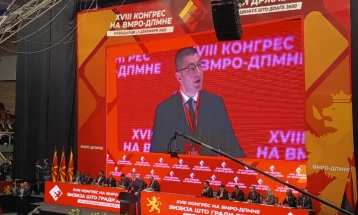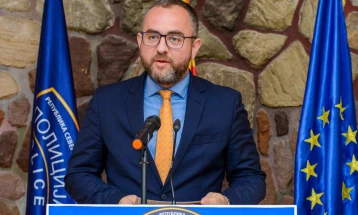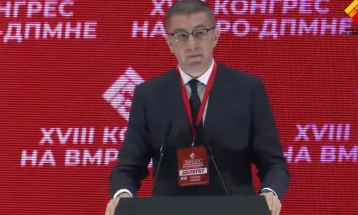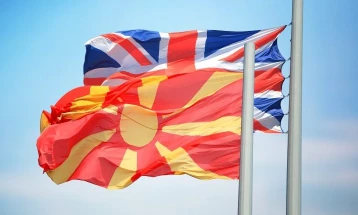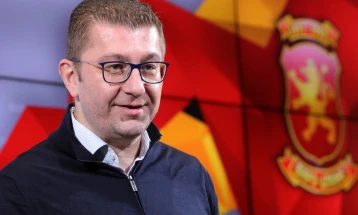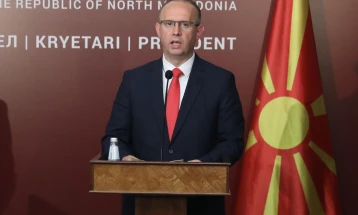Children usually fall victim to human traffickers; sexual exploitation most common
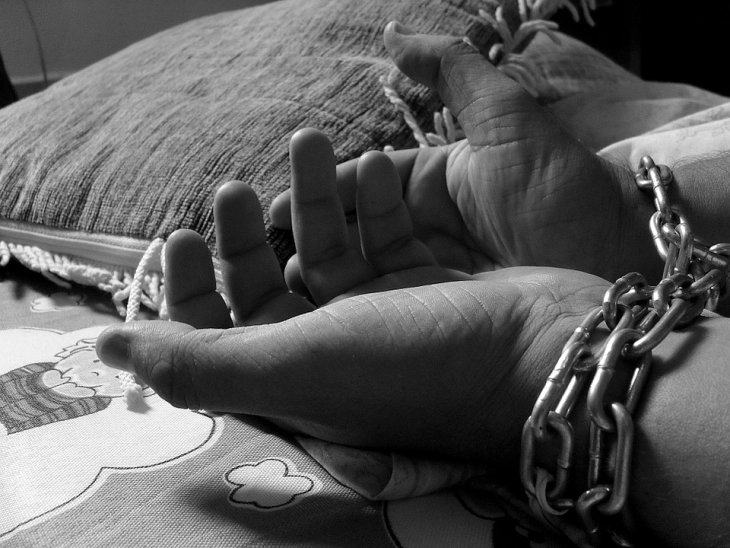
Skopje, 14 August 2021 (MIA) - The Covid-19 pandemic didn’t change the landscape of the battle against human trafficking in any significant way. Forced marriages and sexual exploitation have remained a problem, and the internet’s influence as a way to recruit children, according to Ljupcho Markudov, chief of the Human Trafficking and Migrant Smuggling Unit and assistant manager of the National Unit for the Suppression of Migrant Smuggling and Human Trafficking.
This trend has been a characteristic of the past several years. Unfortunately, most identified victims of human trafficking are children aged 12-17. Sexual exploitation, Markudov says, is the most common form, but there are also forced marriages which include sexual and labor exploitation.
While talking about the conditions in the fight against illegal migration and human trafficking, Markudov adds that there are only two female children currently at the Human Trafficking Victim Center, who had been victims of sexual exploitation. Others have been rehabilitated and given help and opportunities which they’ve accepted, they go into courses and they’re given directions to secure jobs for them, as well as every right from the program and individual plans to help and support each victim.
The impact of Covid pandemic in identifying potential human trafficking victims and the fight against it
Markudov deems that the pandemic didn’t make any significant changes. There are still forced marriages and sexual exploitation, and the internet’s influence as a way to recruit children may have increased a little. Much older men catfish as young boys and they exploit children.
Markudov says that the internet and social media are the biggest issue in the country.
“We have a special organizational unit in the Ministry of Internal Affairs that tracks them, but we can’t track all websites or social media. We definitely need the help of parents and the community here, and any kind of information that they may have, they should share it so that we can help any child,” Markulov tells MIA.
He recalls a concrete example of a way to recruit human trafficking victims over the internet.
“You have a fifteen-year-old girl from a broken family, divorced parents, the mother shows no interest in her and her father lives abroad. She gets in touch with a guy on social media, two-three years her senior, they get close and agree to meet up. She meets the him twice, and his “father” shows up on the third date. She’s taken to a different city in our country, they go to cafes, tourist spots, the girl is finally happy because she thinks she’s found love, but it changes very quickly. She’s locked in an apartment in one of the cities in our country, and she’s drugged into submission and forced into giving men sexual favors,” Markudov says. He adds that these teenagers are forced into marriage despite being unprepared physically or psychologically, and the whole family exploits them sexually and forces them to do hard physical labor that doesn’t fit their age, and they even force them to beg for money in the streets or work at farmer’s markets etc. these are the main forms of exploitation when it comes to children.
Human trafficking victims and nationality
There are human trafficking victims from every nationality, Markudov says, but most of them are Roma because it has been treated as a traditional right for them for years. We’ve been changing this over the past couple of years, Markudov says, and the Public Prosecution’s Office is accepting the international organizations’ recommendations, as well as our reports that relate to forced marriages.
“If the child is the most protected category, we can’t allow them to be part of forced marriages or be exploited in any way,” Markudov adds.
Where the child-victims of human trafficking get placed
The child-victims don’t have to be in the special Center, which is a more closed type in relation to other group homes. The children can be placed in group homes where there are no safety risks. They work with the children there, they attend classes, and being around other children leads to better and easier resocialization. This is one of the programs, and it’s not something that occurs in other countries.
July 30 is World Day against Trafficking in Persons. The Interior Ministry, as well as the Ministry of Labor and Social Policy and NGOs, supported by the International Organization for Migrations, have reactivated the mobile teams to identify victims and potential human trafficking victims.
The goal of the mobile teams is to be institutionally stable, constant and functional in the field, which will contribute to the improvement of identifying vulnerable categories through proactive field action, securing help and support and sharing information with the authorities for leading proactive investigations, which will strengthen national capacities and increase service effectiveness.
According to Markudov, the mobile teams proved a good idea, and it’s expected they will yield better results this year because their member selection is better. The advantage is that they have direct contact with vulnerable categories that the identified victims often come from.
Five mobile teams have been formed in Bitola, Gevgelija, Kumanovo, Skopje and Tetovo were formed in January 2018 and they are one of the successfully realized priority activities stipulated by the government’s reform plan of the time, 3-6-9, supported by the IOM.
Between March and December 2019, these teams contacted, informed and assisted 797 people, out of which 719 were Macedonian residents and 78 were foreigners. 14 victims of human trafficking were identified. They were all female, 10 children and 4 adults, as well as 190 potential human trafficking victims and 593 persons from vulnerable categories, out of which 318 were men and 275 were women.
IOM: Labor exploitation dominant in adult men, women tend to be victims of labor and sexual exploitation
Sonja Bozhinovska Petrushevska, manager of Skopje’s IOM office, said that the organization’s data from the wider region shows that labor exploitation was predominant in adult men, whereas women were subject to sexual exploitation as well as labor exploitation.
Boys were mainly exploited for work, less so for begging and sexual exploitation. Contrary to this, girls were mainly victims of sexual exploitation, and less so for forced work and begging.
Since the mid-90s, IOM and their partners have assisted over 100 thousand men, women and children who had been trafficked for labor exploitation, sexual exploitation, slavery, servileness and organ trafficking on a global level. Globally, the IOM assists around 8000 human trafficking victims yearly.
On a global level, the socio-economic consequences from the pandemic increased the vulnerability in terms of human trafficking. Children have become more vulnerable as a result of the pandemic, and girls are now at higher risk of early marriage, pregnancy and violence.
World data shows that violence against women has been on the rise since the pandemic started, says Bozhinovska Petrushevska. Global reports point to increased risk of recruiting women over the internet.
North Macedonia has joined the UN’s Blue Heart campaign, becoming the second country in this region to back it. The campaign focuses on human trafficking victims, and the importance of hearing them out and learning from their experiences. The campaign depicts the victims as key actors in the fight against human trafficking and their role in establishing effective measures to prevent, identify, support and rehabilitate.
Cvetanka Minovska
Translated by Dragana Knezhevikj

